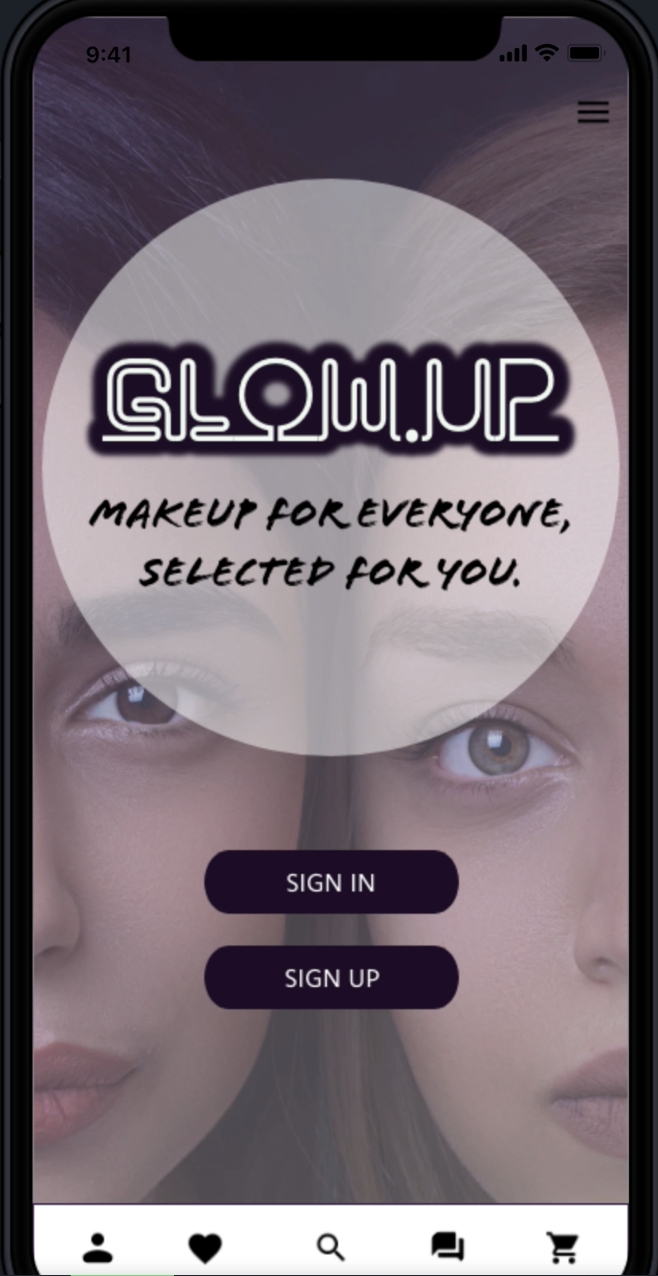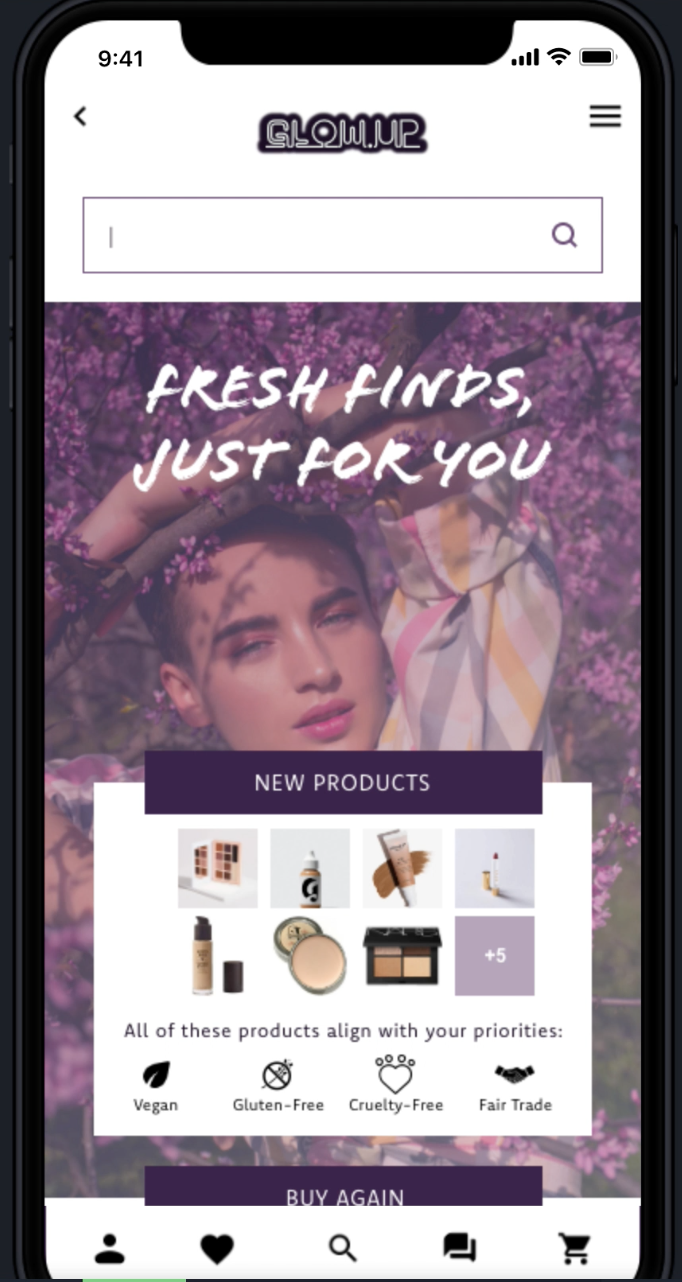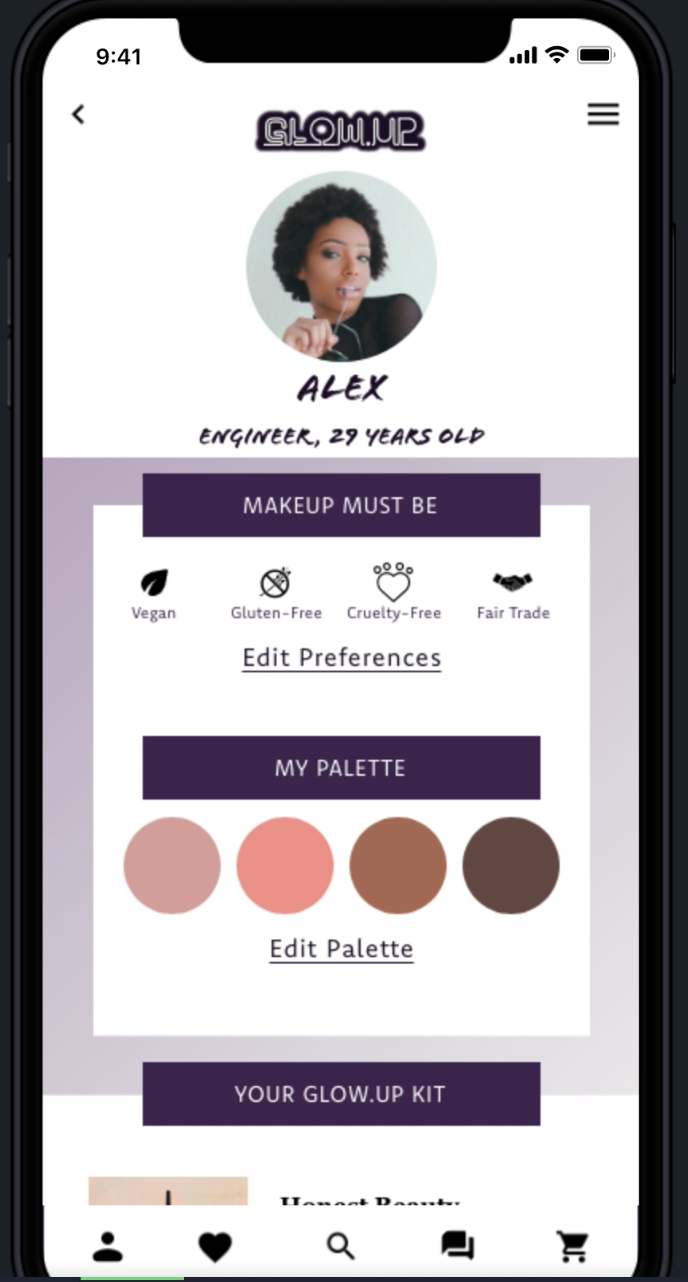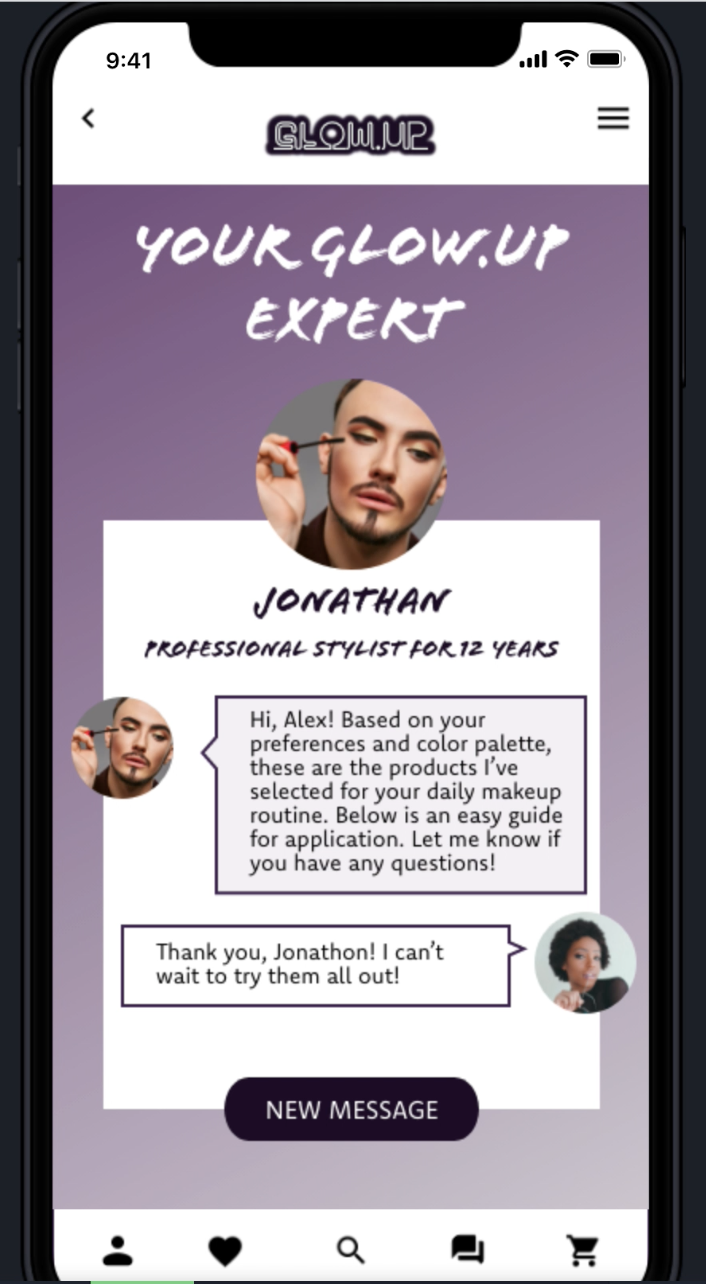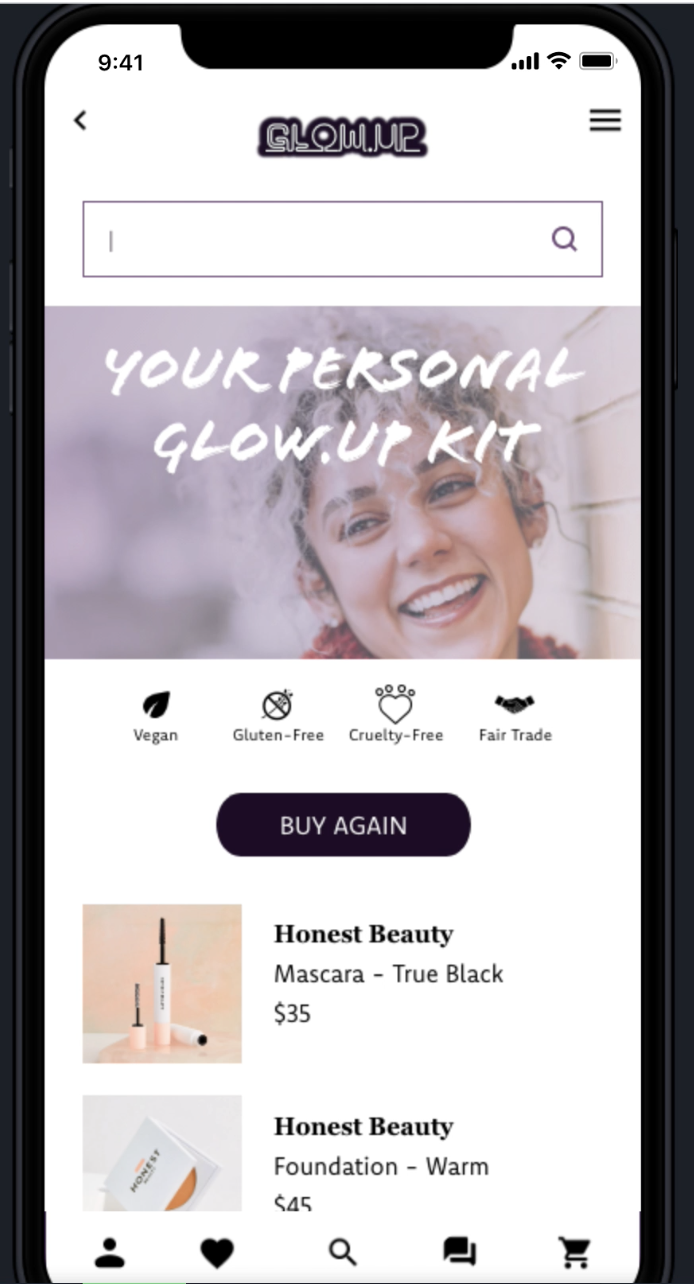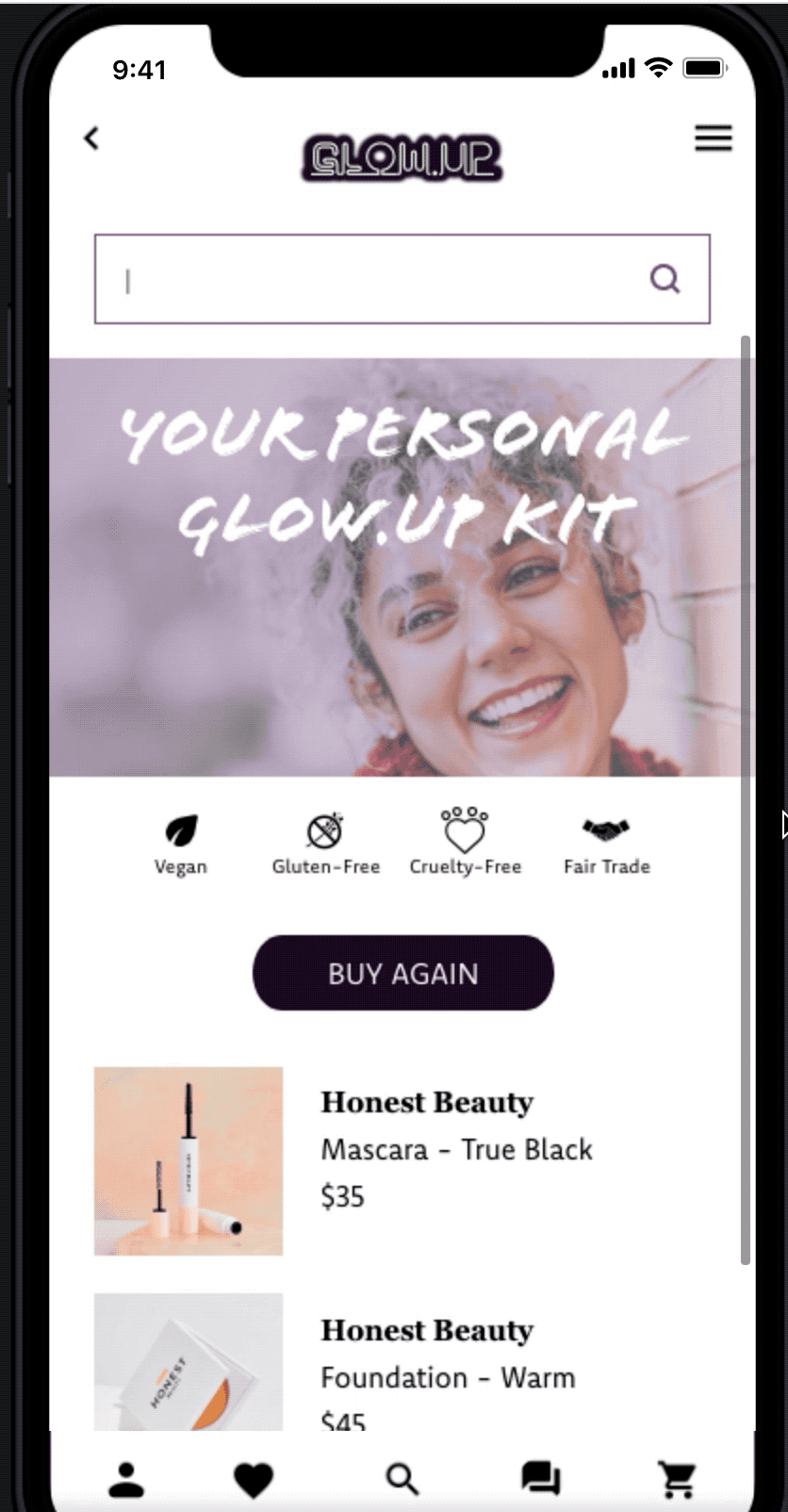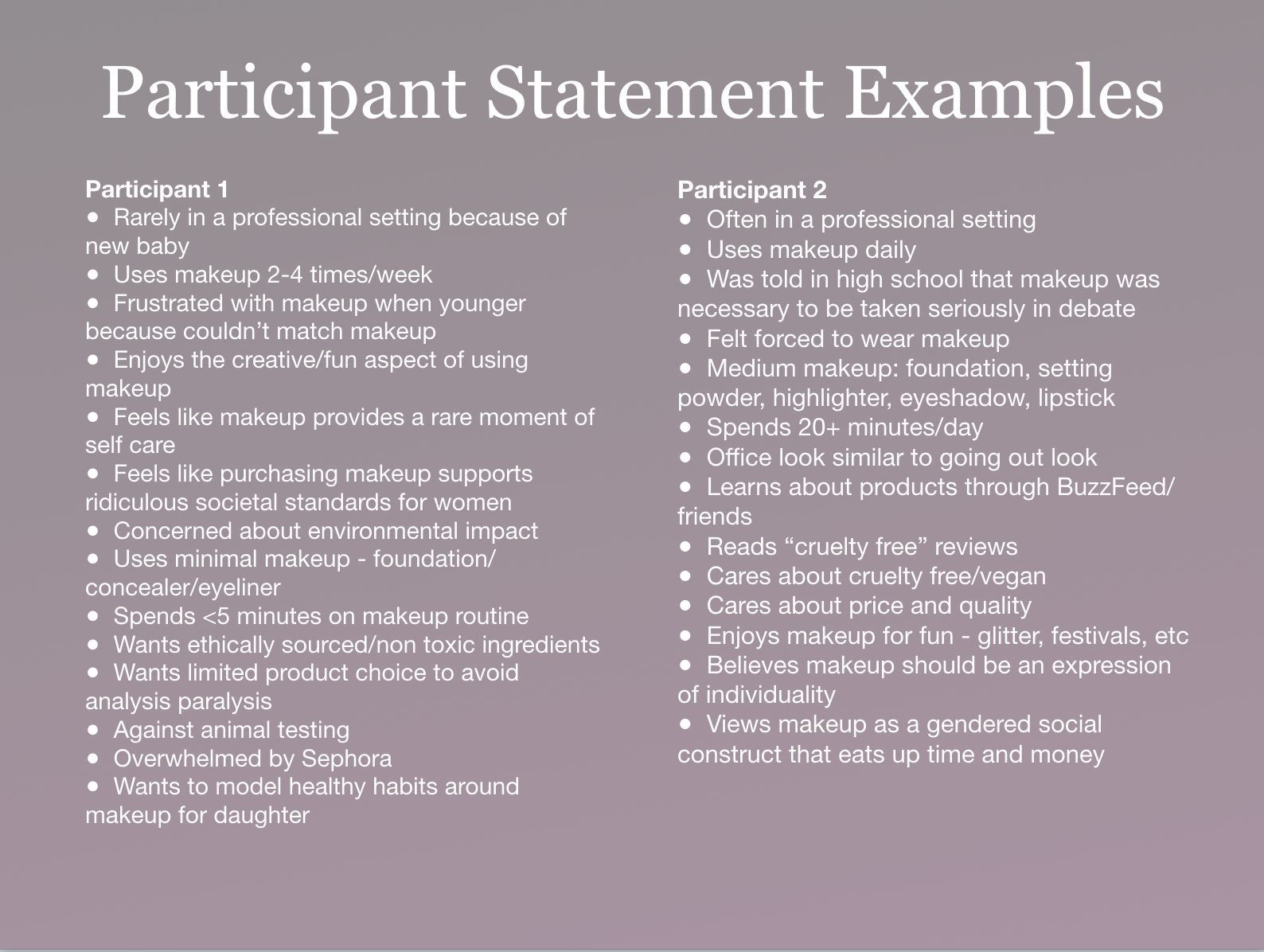Glow.Up
An inclusive, personalized makeup shopping app built with AdobeXD and InVision
background
Like other modes of personal expression, makeup invokes multifaceted emotional and cultural implications. Some women may fondly remember the first time their mother taught them to properly apply lipstick. Other women (like myself), may carry somewhat bitter emotional baggage due to a feminist mom who was against shaving her legs, let alone teaching her daughter how to pick the right color of foundation (as evidenced by my white-faced junior high yearbook pictures). Men may have shameful memories of wanting to experiment with makeup and instead being forced to conform to gendered norms. People of color may have uncomfortable experiences surrounding the lack of choices and products catering to them in a white-dominated industry. Makeup, whatever its positive or negative associations, is an extremely personal and meaningful expression of self, with a wide consumer base and limited options for selecting and purchasing products outside of mainstream store chains.
the problem
Consumers — particularly professionals who wear makeup on a semi-regular to regular basis — need a makeup purchasing experience outside of mainstream stores that is inclusive and personalized.
People with busy schedules often view makeup as just another facet of regular self-care and maintenance. Daily usage is often limited to specific routines and products. The need to go to a physical store, such as Sephora or ULTA Beauty, requires unnecessary time and stress, turning makeup into an errand akin to grocery shopping. However, unlike grocery stores, which are designed to provide a navigable, convenient experience for customers, most makeup stores are located in shopping districts with limited parking, bright, fluorescent lighting, loudly blasting pop music, employees attempting to push the latest brands and products, and swarms of teenagers arguing over which Kylie Jenner lipgloss to spend their allowance on.
Many people (particularly professionals with limited time) need a makeup routine that is minimal and quick to replicate. Despite this prevalent need, there is widespread confusion and discomfort in finding and using the right products. “How do I select the right shade of foundation? Should I use a makeup brush or a sponge for application? Do I really need an under-eye cream and how do I pick one that won’t irritate my skin?” These are common questions with vague answers, turning the entire process of purchasing and using makeup into a discomfiting and discouraging experience rather than a positive, engaging process of self-expression. Traditionally marginalized consumer groups, such as LGBTQ+, people of color, and older people, face further issues in finding and purchasing products.
Additionally, there is a growing demand for makeup products that are natural and sustainable. The makeup industry is a huge contributor to pollution, plastic waste, chemical usage, and even animal testing. Many consumers would like to support brands that combat these issues, but do not know how to find or verify which brands are doing so.
the proposed solution
A makeup app that caters to professionals, with a target audience of 25-50 year olds who tend to use makeup on at least a semi-regular basis. The app would provide curated purchasing options, with a focus on brands that provide sustainable, natural products that are gentle on most skin types, as well as an emphasis on diversity and accessibility for typically underrepresented consumer groups.
generative User experience research - 1:1 interviews
key pain points
People want to know that their makeup is:
Cruelty-free and free of animal testing
Environmentally friendly
Inclusive and has diverse representation
Many people want their makeup to be:
“Natural looking”
Easy and quick to apply (a simple routine)
Easy to color-match
FUN and expressive! Makeup is still, at its core, a means of self-expression and a method of instilling self-confidence
revised problem statement
People need a personalized makeup shopping experience that aligns with their ethics, values, and schedule.
user flow
wireframing
prototyping
evaluative user experience research - 1:1 surveys and google surveys
“Love the look and feel! It feel’s like a makeup app.”
“The profile picture and logo are too large — they distract from everything else.”
“I don’t understand the profile page with the consultant chat page. Maybe consolidate these into one page? I don’t know, something to make it more cohesive.”
“The look is beautiful. The navigation is a little confusing. Maybe make the shopping and checkout process a little more straightforward.”
current prototype
key changes
Simple navigation
Onboarding process to demonstrate how the user gets color-matched and can select personal preferences
Smaller logo and user profile image
More product descriptions to give a better idea of the product search, selection, and checkout process
Consolidated user profile settings
